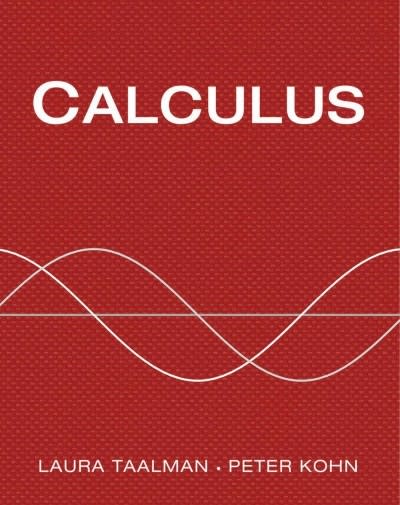Question
It is estimated thatabout 75% of adultsin the United States drink coffee. Often, coffee is used to replace the need for sleep. It works alright,
It is estimated thatabout 75% of adultsin the United States drink coffee. Often, coffee is used to replace the need for sleep. It works alright, or so we think. Let's find out, in this exciting homework problem!
One recent studyinvestigated the effects of drinking coffee, taking a nap, and having a"coffee-nap"- the practice of drinking some coffeeand thenhaving a short nap. The study broke participants up into three groups of 10 participants each, where the groups would have a nap, or have a coffee, or have a coffee-nap, then perform a task where their reaction time was measured. In previous experiments the mean reaction time measurement was found to be normally distributed. The reaction time means (milliseconds, ms) and standard deviations for the three groups of participants are given in the table below.
Group:
Coffee + Nap:
Sample Size: 15
Mean: 451.3
Standard Deviation: 31.9
Coffee:
Sample Size: 15
Mean: 494.2
Standard Deviation: 39.6
Nap:
Sample Size: 15
Mean: 492.8
Standard Deviation: 45.2
Part A: Compute a 97.5% t-confidence interval for the mean reaction time measurement for participants in each of these three groups. (You should find three separate confidence intervals.) Do all computations in Python by hand, and report the results.
- Can you make any conclusions regarding whether coffee, naps or both (coffee-naps) are better for faster reaction times?
- Why did we use a t-distribution?
[27]:
stats.t.cdf(.361, df = 28) 1 - stats.t.cdf(.361, df = 28)
[27]:
0.36040449942691466
Part B: Use an appropriate hypothesis test to determine if there sufficient evidence, at the=0.025
=0.025significance level, to conclude that taking a nap promotes faster reaction time than drinking coffee. Be sure to clearly explain the test that you're doing and state all hypotheses. Do all computations in Python, and report results.
[48]:
1-stats.t.cdf(3.288, df=28) 1-stats.t.cdf(.0908, df=28)
[48]:
0.4641489867691545
Part C: Use an appropriate hypothesis test to determine if there is sufficient evidence, at the=0.025
=0.025significance level, to conclude that taking a coffee-nap promotes faster reaction time than only drinking coffee, or only having a nap. Be sure to clearly explain the test that you're doing and state all hypotheses. Do all computations in Python, and report results.
[ ]:
[ ]:
Part D: Compute a 97.5% confidence interval for the standard deviation of reaction time for coffee-nap takers. Do all computations in Python, and report the results.
[ ]:
Step by Step Solution
There are 3 Steps involved in it
Step: 1

Get Instant Access to Expert-Tailored Solutions
See step-by-step solutions with expert insights and AI powered tools for academic success
Step: 2

Step: 3

Ace Your Homework with AI
Get the answers you need in no time with our AI-driven, step-by-step assistance
Get Started


